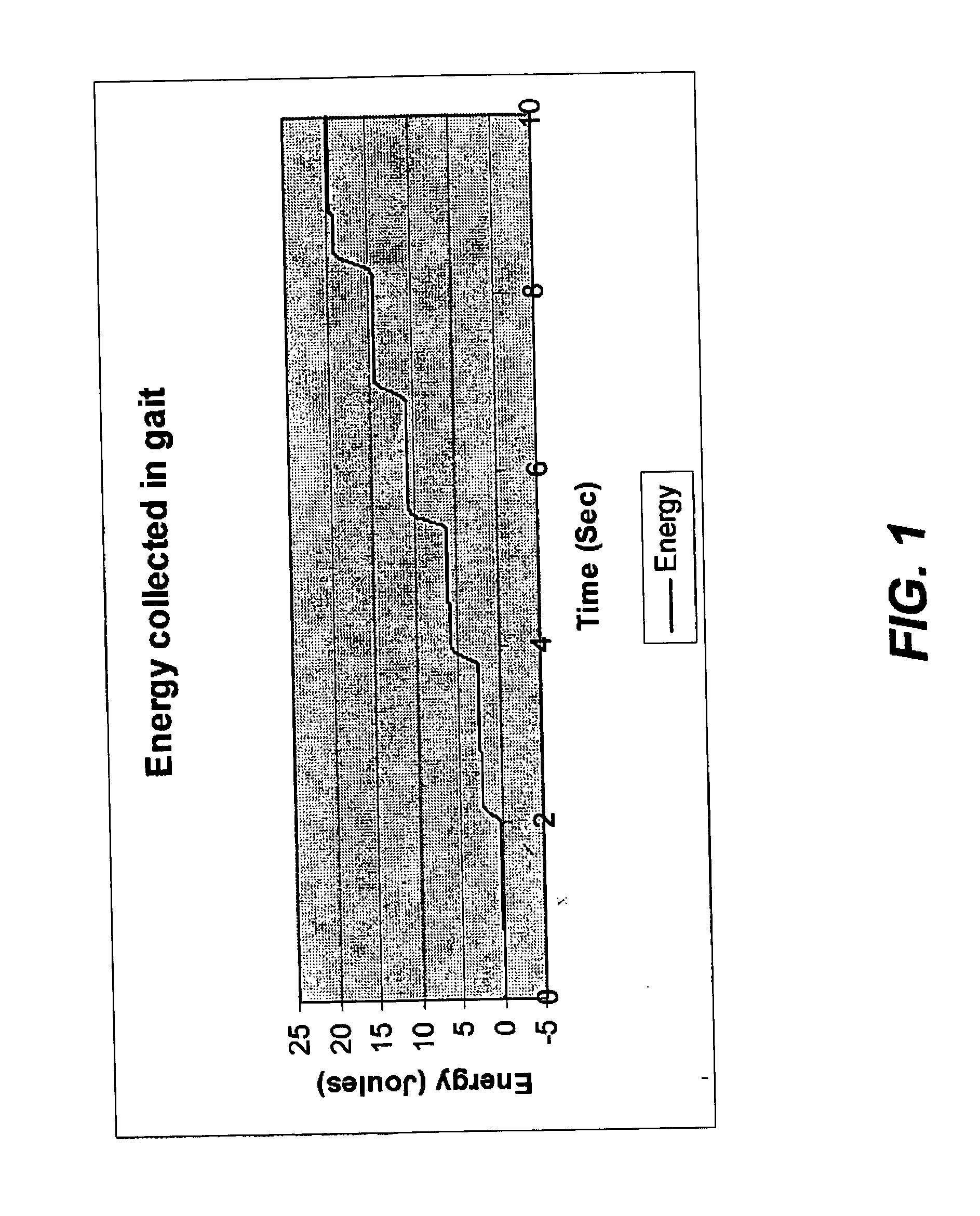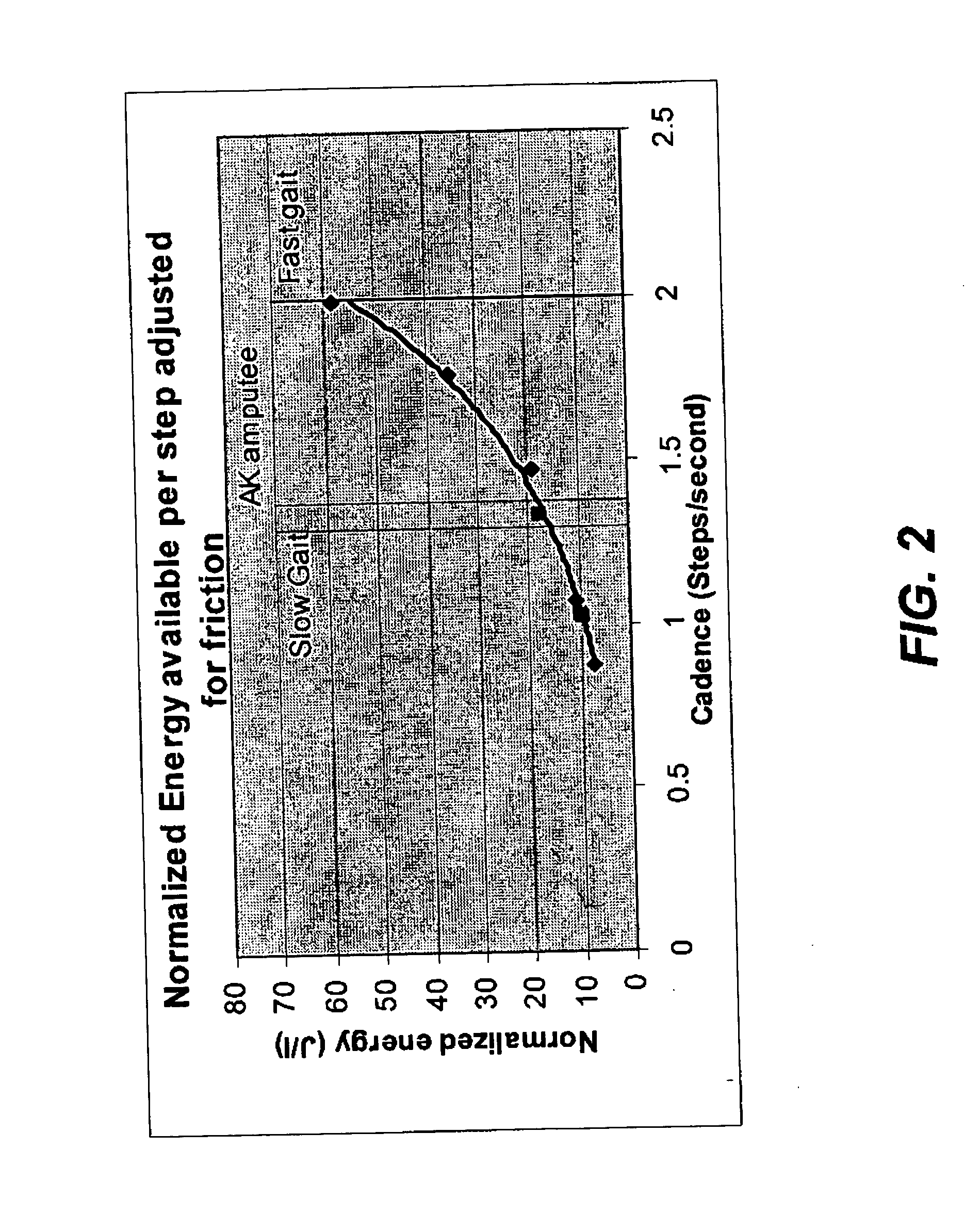Prosthetic leg having electronically controlled prosthetic knee with regenerative braking feature
a prosthetic knee and electronic control technology, applied in the field of prosthetic legs with electronic control prosthetic knees, can solve the problems of generating electrical power, essentially waste of mechanical energy output of amputees, etc., and achieve the effect of reducing the necessary energy expenditure of patients, absorbing more energy, and enhancing other portions of the gait cycl
- Summary
- Abstract
- Description
- Claims
- Application Information
AI Technical Summary
Benefits of technology
Problems solved by technology
Method used
Image
Examples
Embodiment Construction
)
[0049] As discussed above, it has been determined that for a large percentage of an individual's gait cycle, and particularly when descending stairs or slopes, the knee joint actually absorbs more energy than it must deliver. This is true for both a natural knee and for a prosthetic knee for use by an amputee. The absorbed energy results from the knee's required and repeated resistance to bending in the extension or flexion directions. This absorbed energy is typically dissipated as heat by known passive prosthetic knees. However, it is also possible to convert this absorbed mechanical energy into electrical energy, and to store the electrical energy for later use.
[0050] As can be observed by reference to the graph of FIG. 1, when using an AK prosthesis, energy must be absorbed from the knee during an amputee's gait cycle. The data shown in FIG. 1 was collected from an electronically regulated knee that was designed to simply mimic the function of current prosthetic knee designs. ...
PUM
 Login to View More
Login to View More Abstract
Description
Claims
Application Information
 Login to View More
Login to View More - R&D
- Intellectual Property
- Life Sciences
- Materials
- Tech Scout
- Unparalleled Data Quality
- Higher Quality Content
- 60% Fewer Hallucinations
Browse by: Latest US Patents, China's latest patents, Technical Efficacy Thesaurus, Application Domain, Technology Topic, Popular Technical Reports.
© 2025 PatSnap. All rights reserved.Legal|Privacy policy|Modern Slavery Act Transparency Statement|Sitemap|About US| Contact US: help@patsnap.com



